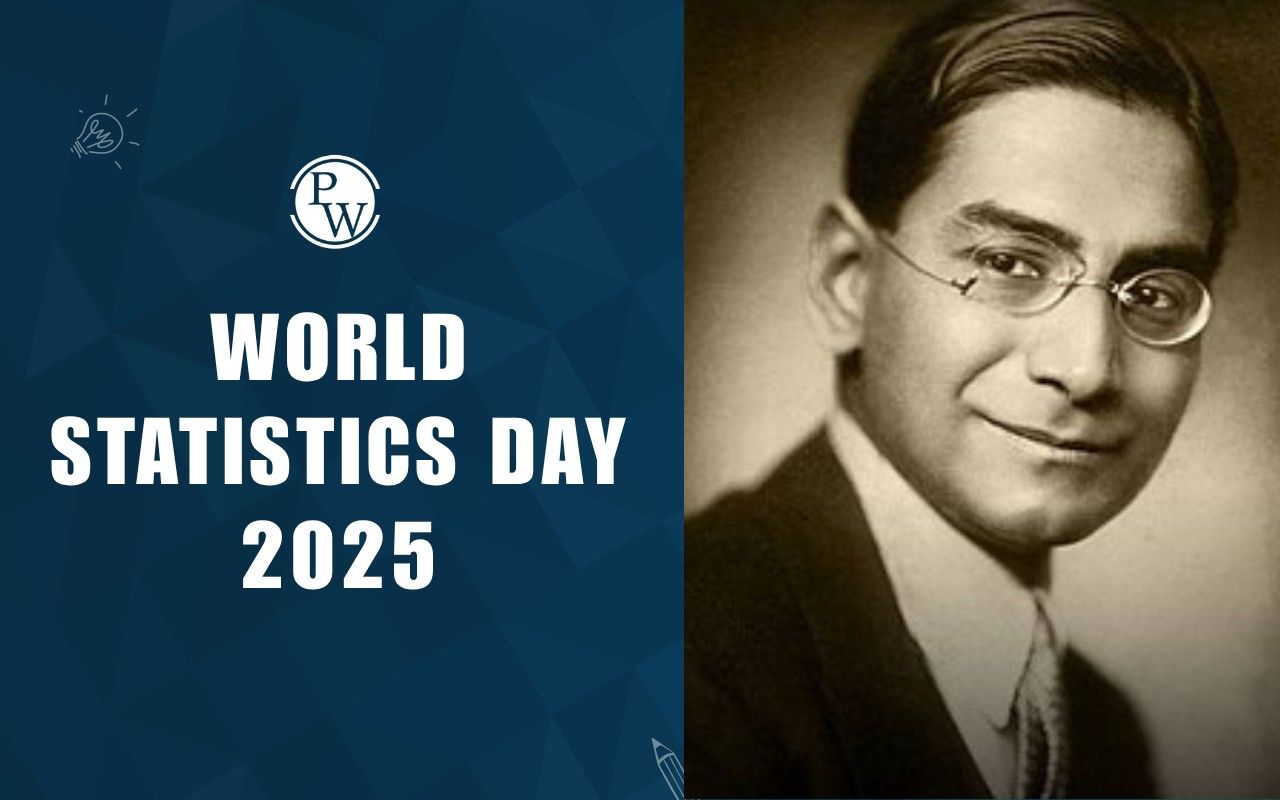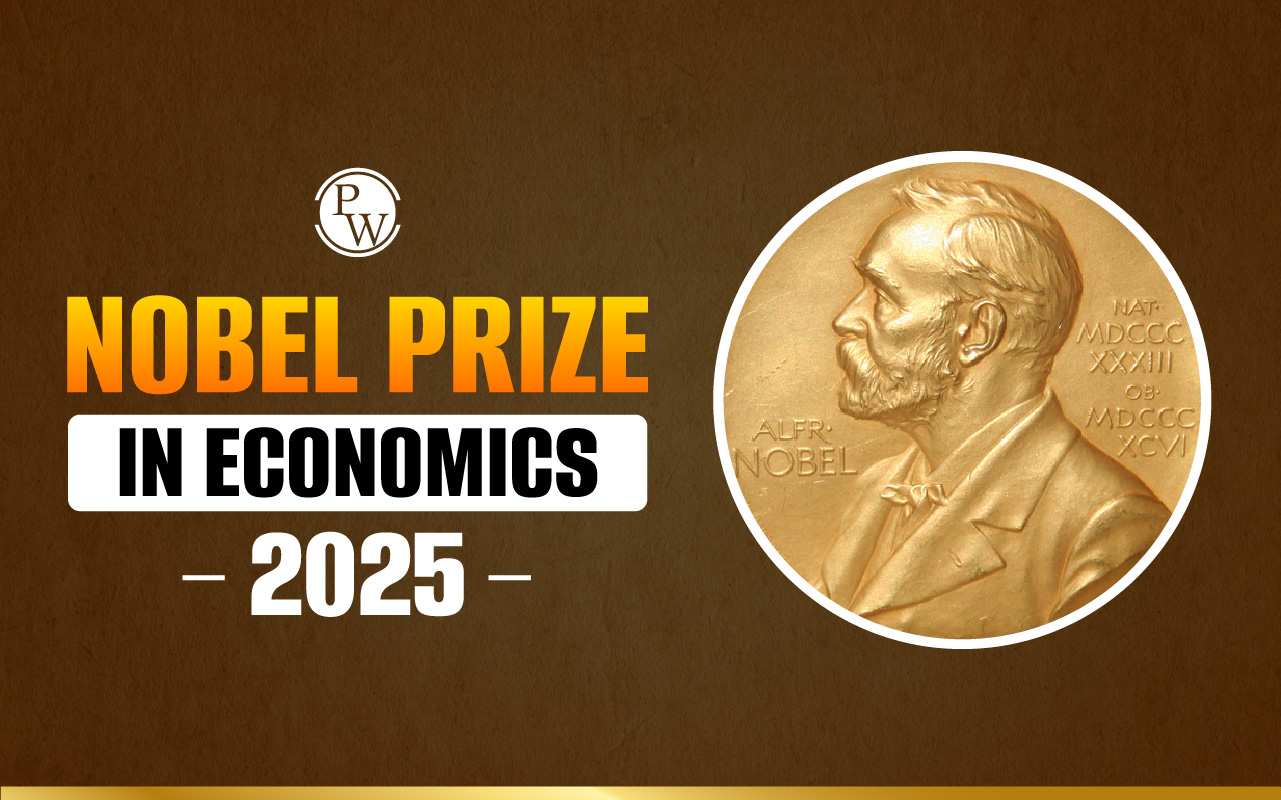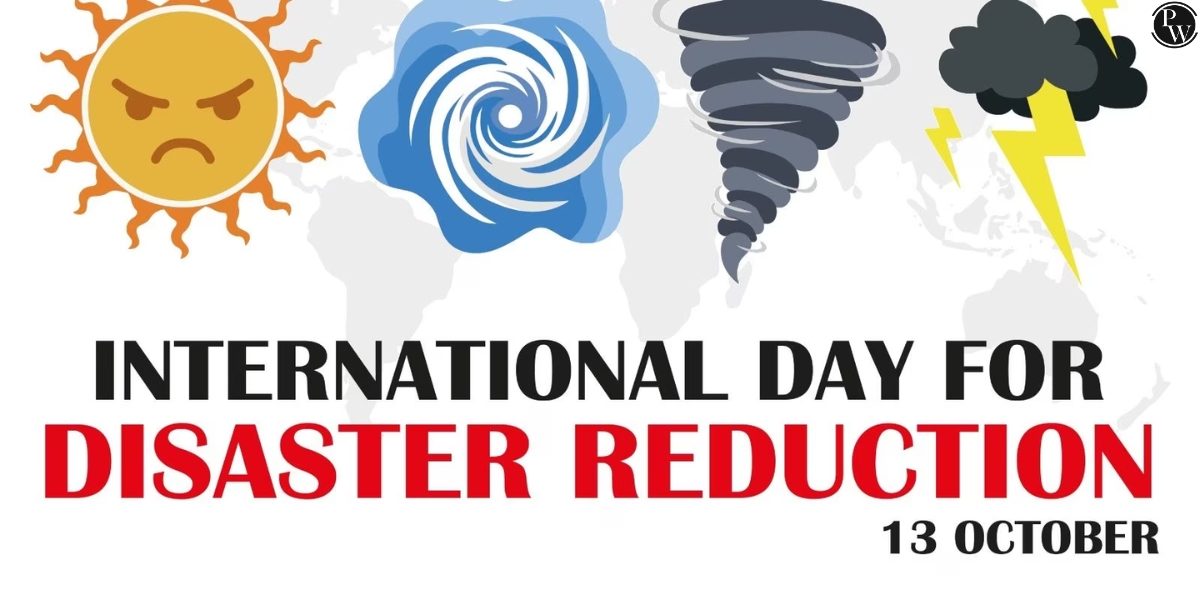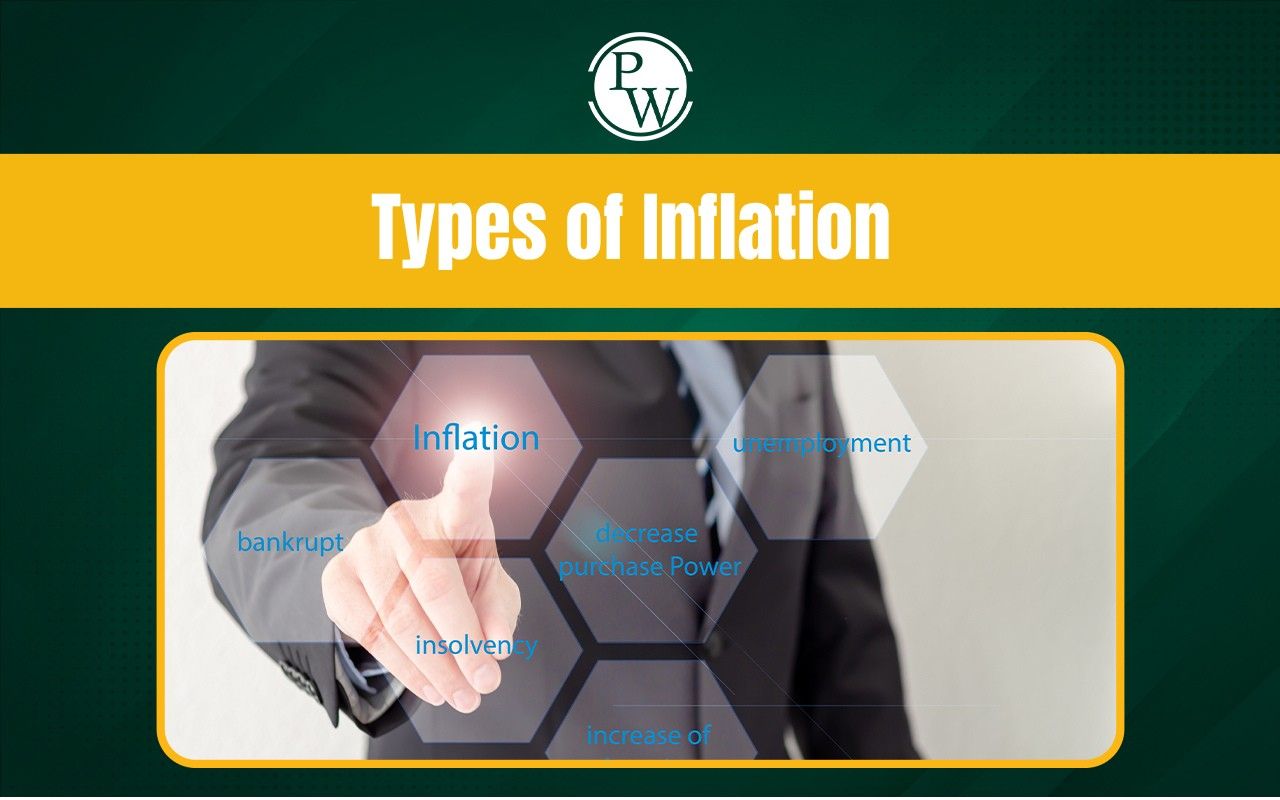

Sustainable Development Goals (SDGs) are 17 goals with 169 targets that all 191 UN Member States have agreed to try to achieve by the year 2030. Adopted in 2015, the SDGs provide a shared blueprint for peace and prosperity for people and the planet. At the heart of the SDGs is a call for action by all countries in a global partnership.
Sustainable Development Goals
The Sustainable Development Goals are a set of 17 interlinked global objectives which were established by the United Nations, in September 2015 at an historic UN Summit. They aim to address a wide range of issues, from ending poverty and hunger to ensuring quality education, reducing inequality, combating climate change, and promoting sustainable economic growth. These goals highlight the need for comprehensive collaboration across all sectors of society—governments, the private sector, civil society, and citizens alike.
Sustainable Development Goals Background
The SDGs were implemented after the success of the Millennium Development Goals (MDGs), which were ended in 2015. Whereas the MDGs focused mainly on poverty reduction and specific social challenges, the Sustainable Development Goals provide a more holistic approach. Both of the goals were designed to encompass environmental sustainability, economic growth, social inclusion, and partnerships, but SDGs were designed with a broader scope and more ambitious vision.
List of Sustainable Development Goals 2030
The 17 Sustainable Development Goals provide a global framework that ensures that by the year 2030, all people can enjoy peace and prosperity, balanced with environmental protection. Here is a quick list of the Sustainable Development Goals 2030 :
| List of Sustainable Development Goals 2030 | ||||
| Goal Number | Goal Name | Primary Objective | Key Targets | Key Indicators |
| 1 | No Poverty | End poverty in all its forms everywhere. | Reduce the number of people living in extreme poverty. | Poverty headcount ratio, social protection coverage. |
| 2 | Zero Hunger | End hunger, achieve food security, and promote sustainable agriculture. | End malnutrition, double agricultural productivity, and ensure sustainable food production systems. | Prevalence of undernourishment, food insecurity index. |
| 3 | Good Health and Well-being | Ensure healthy lives and promote well-being for all ages. | Reduce maternal mortality, end preventable deaths of children, combat communicable diseases, and promote mental health. | Maternal mortality rate, life expectancy, vaccination rates. |
| 4 | Quality Education | Ensure inclusive and equitable quality education and promote lifelong learning opportunities. | Universal primary and secondary education, equal access to affordable technical and vocational education. | Literacy rate, school enrollment rate, access to digital learning. |
| 5 | Gender Equality | Achieve gender equality and empower all women and girls. | End discrimination, eliminate violence, and ensure equal opportunities in leadership and education. | Gender parity index, proportion of women in leadership roles. |
| 6 | Clean Water and Sanitation | Ensure availability and sustainable management of water and sanitation for all. | Achieve universal access to safe water, reduce water pollution, and protect water ecosystems. | Access to clean water, sanitation coverage, water quality index. |
| 7 | Affordable and Clean Energy | Ensure access to affordable, reliable, sustainable, and modern energy for all. | Increase the share of renewable energy, improve energy efficiency, and ensure universal access to electricity. | Access to electricity, renewable energy consumption, and energy efficiency. |
| 8 | Decent Work and Economic Growth | Promote sustained, inclusive, and sustainable economic growth, and full and productive employment. | Sustain GDP growth, increase economic productivity, and reduce youth unemployment. | GDP growth rate, unemployment rate, youth employment rate. |
| 9 | Industry, Innovation, and Infrastructure | Build resilient infrastructure, promote inclusive and sustainable industrialization, and promote innovation. | Develop quality infrastructure, promote sustainable industries, and increase access to information and technology. | Access to technology, infrastructure investment, and industrial employment. |
| 10 | Reduced Inequalities | Reduce inequality within and among countries. | Reduce income inequality, promote inclusion, and improve regulation of global financial markets. | Income distribution index, Gini coefficient, financial inclusion rate. |
| 11 | Sustainable Cities and Communities | Make cities inclusive, safe, resilient, and sustainable. | Ensure affordable housing, reduce slum populations, improve urban planning, and reduce disaster impact. | Access to housing, air quality, and resilience to natural disasters. |
| 12 | Responsible Consumption and Production | Ensure sustainable consumption and production patterns. | Reduce waste generation, promote recycling, and achieve sustainable management of natural resources. | Material footprint, recycling rates, food loss index. |
| 13 | Climate Action | Take urgent action to combat climate change and its impacts. | Integrate climate change measures into policies, improve resilience, and enhance education on climate change. | CO2 emissions, climate adaptation plans, disaster preparedness. |
| 14 | Life Below Water | Conserve and sustainably use the oceans, seas, and marine resources. | Reduce marine pollution, protect marine and coastal ecosystems, and prevent overfishing. | Ocean acidification levels, protected marine areas, fish stock health. |
| 15 | Life on Land | Protect, restore, and promote sustainable use of terrestrial ecosystems. | Halt deforestation, combat desertification, stop biodiversity loss, and restore degraded land. | Forest area, biodiversity index, land degradation rate. |
| 16 | Peace, Justice, and Strong Institutions | Promote peaceful and inclusive societies, provide access to justice, and build accountable institutions. | Reduce violence, protect fundamental freedoms, and promote the rule of law. | The homicide rate, rule of law index, and representation in decision-making. |
| 17 | Partnerships for the Goals | Strengthen global partnerships for sustainable development. | Increase international support, encourage technology transfer, and improve global financial stability. | Foreign aid received technology transfer rates and public debt ratio. |
Sustainable Development Goals by NITI Aayog
In India, the Sustainable Development Goals are closely observed and implemented by the government institution ‘NITI Aayog’ . NITI Aayog plays an important role in aligning national development strategies with the SDGs and works to ensure that India remains on track to achieve these goals by 2030.
NITI Aayog’s Role in Achieving SDGs
The Sustainable Development Goals (SDGs) represent an ambitious global framework to drive development by 2030 , addressing challenges across economic growth, social inclusion, and environmental sustainability. In India, NITI Aayog serves as the nodal institution responsible for coordinating efforts toward achieving these goals. Its approach reflects the principles of cooperative and competitive federalism , ensuring active collaboration among the Union and State Governments .
Key Responsibilities of NITI Aayog:
-
Monitoring Progress:
-
NITI Aayog tracks performance at both
national and state levels
through:
- SDG India Index : It measures and tracks the national progress of all States and UTs on 113 indicators aligned to the Ministry of Statistics and Programme Implementation’s (MoSPI) National Indicator Framework (NIF). The SDG India Index computes goal-wise scores on the 16 SDGs for each State and UT.
- Multidimensional Poverty Index (MPI) : Measures poverty reduction across different dimensions.
- North Eastern Region Index and Dashboard : Focuses on regional priorities and challenges in the Northeast.
-
NITI Aayog tracks performance at both
national and state levels
through:
-
Localization of SDGs:
- Emphasizes the local implementation of SDGs , ensuring that the development agenda reaches the most marginalized communities .
- Supports states and districts to integrate SDGs into their policies, plans, and programs to enhance local outcomes.
-
Strengthening Statistical Systems:
- NITI Aayog has improved data collection and reporting mechanisms , enabling effective monitoring across more than 100 indicators aligned with the 17 SDGs.
- These efforts ensure transparent tracking and better insights for policymakers to take corrective actions.
-
Promoting India as a Leader in SDGs:
- With its robust monitoring framework and comprehensive policies, NITI Aayog aims to position India as a global trailblazer in achieving the SDG targets by 2030.
Key Highlights of NITI Aayog SDG Index 2024
The NITI Aayog SDG Index 2024 provided an updated and comprehensive analysis of India's progress while highlighting both the achievements and areas where additional focus is needed.
-
Improved National Score
- India's composite SDG score improved to 71 (from 66 in 2020-21 and 57 in 2018).
-
Progress in Key SDGs
- Significant progress in Goals 1 (No Poverty), 8 (Decent Work and Economic Growth), 13 (Climate Action) , and 15 (Life on Land) .
- Climate Action (Goal 13) saw the highest increase, improving from 54 to 67 , followed by No Poverty (Goal 1) from 60 to 72 .
-
State and UT Performance
- 32 States/UTs achieved 'Front Runner' status (score 65-99), with 10 new entrants like Uttar Pradesh, Assam, and Madhya Pradesh.
- State scores now range from 57 to 79 , showing marked progress compared to 2018.
- Uttar Pradesh showed the highest improvement, increasing its score by 25 points .
-
Government Interventions Driving Progress
- Major schemes contributing include PM Awas Yojana, Ujjwala, Jan Dhan, Ayushman Bharat, PM Mudra Yojana , and Saubhagya .
- Expansion of renewable energy to 73.32 GW and 14.9 crore tap water connections under Jal Jeevan Mission.
-
Methodology and Coverage
- Tracks 113 indicators aligned with the National Indicator Framework (NIF) across 16 SDGs (excluding Goal 14).
- Promotes collaborative competition between States to enhance performance.
-
Global Impact and Future Roadmap
- The Index offers lessons for other countries and aligns with India’s journey toward Viksit Bharat @ 2047 .
- The online dashboard provides real-time visualizations for deeper insights into SDG outcomes.
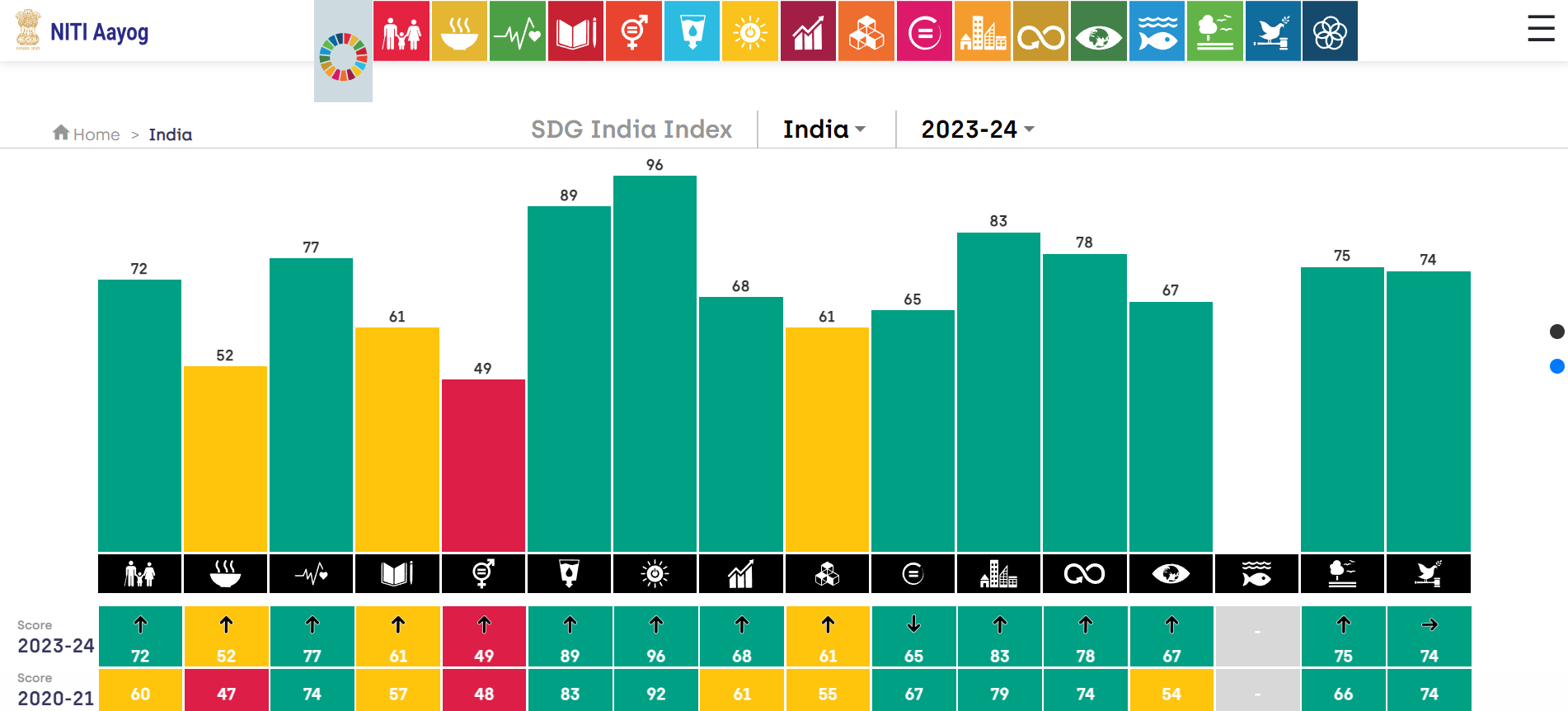
Conclusion
The Sustainable Development Goals represent a universal call to action to address critical global challenges by 2030. These 17 goals encompass every aspect of human development and environmental protection, aiming for a better, more sustainable future. In India, NITI Aayog plays a crucial role in monitoring and facilitating progress toward these goals, with the NITI Aayog SDG Index 2024 expected to provide valuable insights into the nation's progress.
Achieving the SDGs demands collective commitment from all sectors of society. With adequate political will, financial resources, and grassroots engagement, the world can make significant strides toward creating a sustainable, equitable, and prosperous future for all.
Looking for guidance in UPSC preparation? Enroll in the best courses offered by Physics Wallah!
| UPSC Related Articles | ||
| UPSC Prelims Questions | NCERT for UPSC Exam 2025 | UPSC Mains Admit Card |
| UPSC Mains Exam Pattern | UPSC Scholarship Test | UPSC Result |
Sustainable Development Goals FAQs
Q1. What are sustainable development goals explain?
Q2. What are the 17 goals of sustainable development points?
Q3. Who created the SDG?
Q4. Who is the father of SDG?
Q5. Who launched SDG in India?
Q.6 What is the NITI Aayog SDG India Index?



